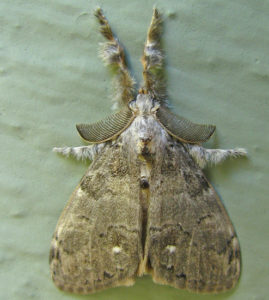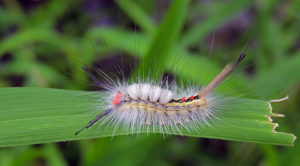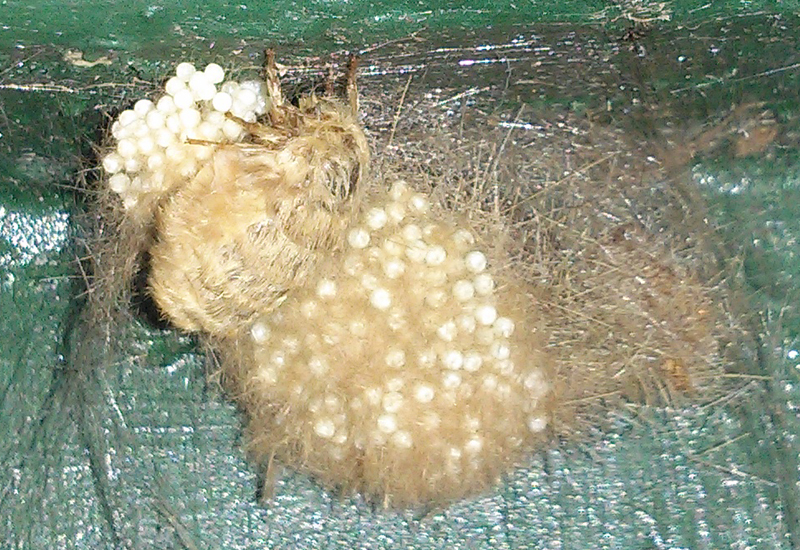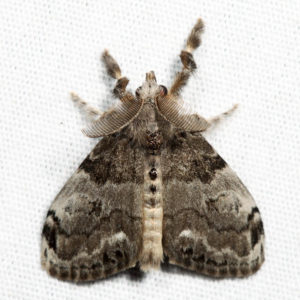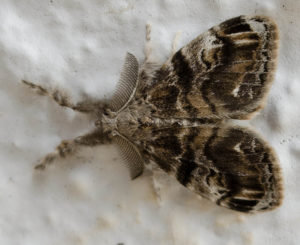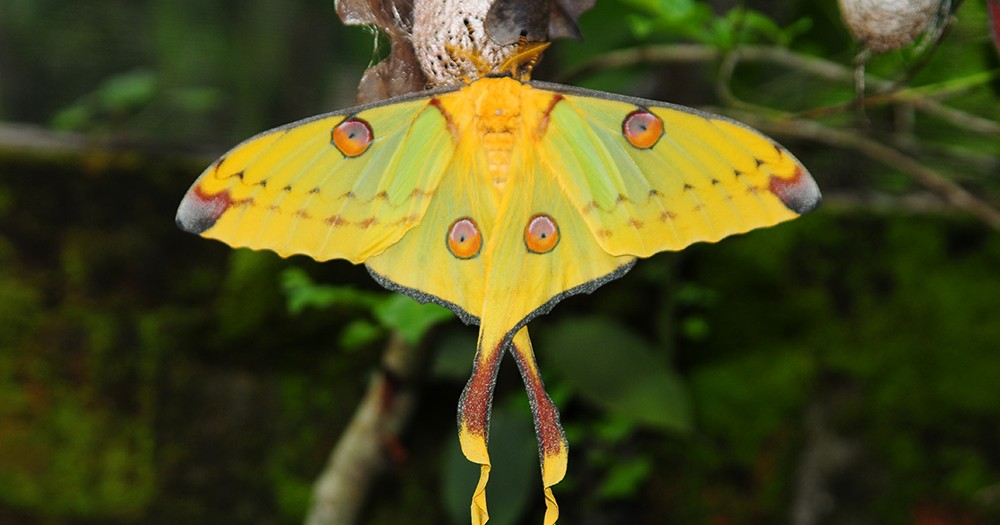White-marked Tussock Moth (Orgyia leucostigma)
White-marked tussock moth of the Erebidae family is indigenous to different parts of North America. The larva is more common than the adult, mostly seen during late summer, particularly in the eastern parts of North America, throughout California, Alberta, and Texas. The white-marked tussock moth has five subspecies in total, some of them being the O. l. leucostigma and O. l. oslari.
cdn.whatsthatbug.com
Scientific Classification
- Family: Erebidae
- Genus: Orgyia
- Scientific Name: Orgyia leucostigma
Description and Identification
Caterpillar
The larva, growing to about 3.5 cm has a red head and a bright-colored body marked with white or yellow stripes. A long, black stripe is also seen going through the centre of its back. One of the striking features of the white-marked tussock moth larva is the hair-like setae covering its body. Four tufts of white hair resembling a toothbrush are seen from its back, while grayish-brown hair pencils occur near its hind end.
White-marked tussock moth caterpillar sting
Since they have long urticating setae, the larvae of these moths sting when touched, causing allergic reactions to humans. Hence, careful handling is needed to minimize the chances of any unavoidable circumstances.
Pupa
The pupae remain encased within a grayish cocoon in the barks of trees and emerge into an adult moth after approximately two weeks. They have an overall hairy appearance, with hairy projections on their abdominal segments. The male pupae have longer antennae and wings than their female counterparts.
Adult Moth
Sexual Dimorphism: Present
The most common difference between the male and female moths is the wings, prominent in the former and almost absent in the latter. The female moths mostly remain in and around their cocoon, barely having wings. Besides, the male moths appear smaller and dull-colored with pronounced comb-like antennae.
Color and Appearance
When opened, the wings are gray with black lines running in a wavy pattern. Both the wings have a similar pattern and color, except for a white spot seen on its forewings. When closed, the pattern and color of the wings remain unchanged, though the white spot gets less prominent.
Average Wingspan: 2.0 – 3.5 cm
Flight Pattern: Consistent
Season: June – November
Quick Facts
| Distribution | Different parts of North America |
| Habitat | Forests, urban regions, and everywhere else their host plants grow |
| Predators | Not recorded |
| Lifespan of Adults | About 15 – 30 days |
| Host Plants | Apple, elm, fir, black locust, cherry, rose, oak, chestnut, willow, spruce, hemlock, hackberry, elm |
| Adult Diet | Nectar of their host plant’s flowers |
Did You Know
- English botanist James Edward Smith described the white tussock moth in 1797.
- Its genus name Orgyia translates to outstretched arms in Latin. This is how most of the moths of the genera remain when at rest.
Scientific Classification
- Family: Erebidae
- Genus: Orgyia
- Scientific Name: Orgyia leucostigma

